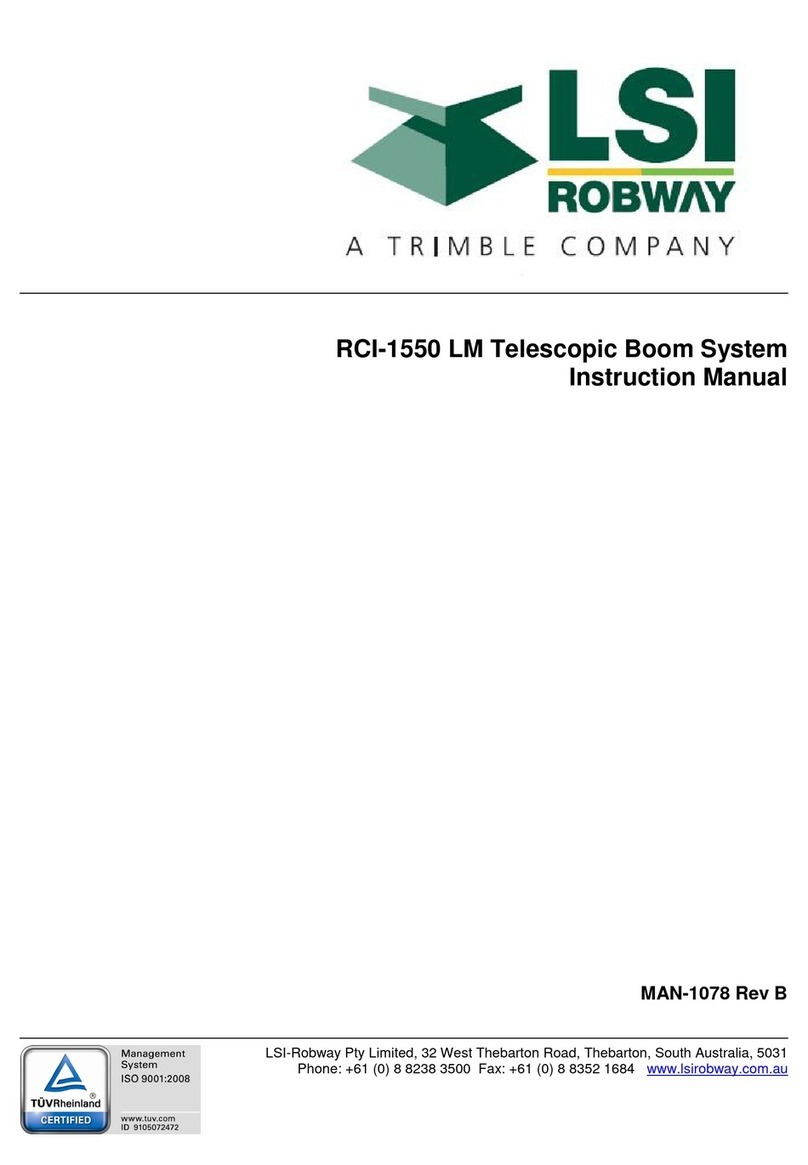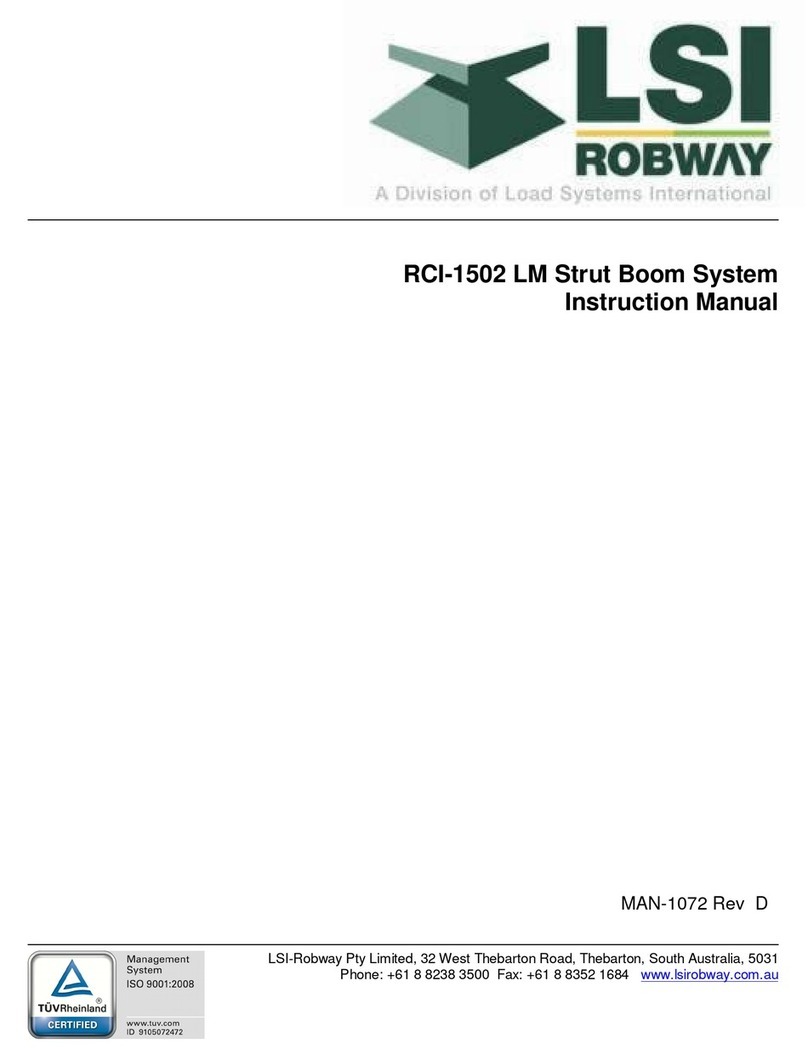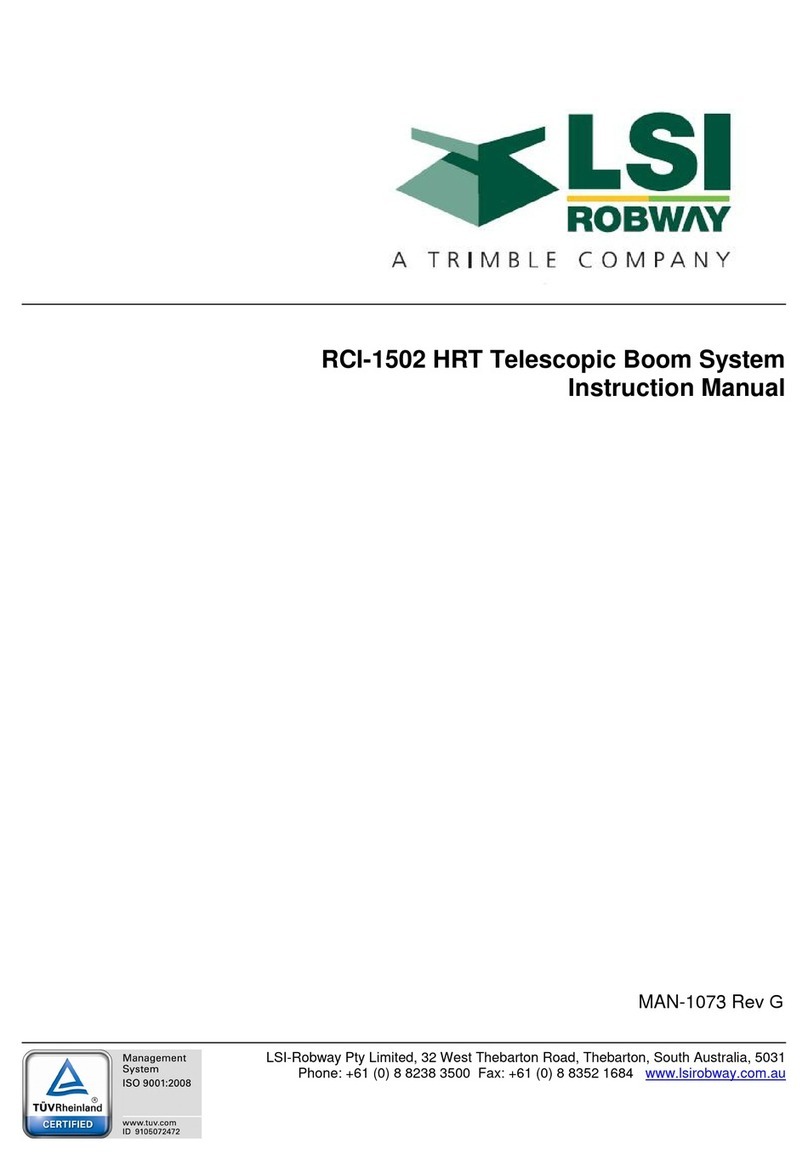Robway Safety Systems Page 2 of 72
6.3 LENGTH SENSORS.................................................................................................................................... 25
6.3.1 GENERAL..................................................................................................................................... 25
6.3.2 110’ Length Sensor – (DRURW33LAA)........................................................................................ 26
6.3.3 140’ Length Sensor– (DRURW43LAA)......................................................................................... 28
6.3.4 Pay-out Cable................................................................................................................................ 29
6.4 ANTI-TWO-BLOCK (IF INSTALLED ) ........................................................................................................ 29
6.4.1 Rectangular type Anti-two Block switches.................................................................................... 29
6.4.2 Tubular type Anti-two Block switches........................................................................................... 29
6.4.3 Multiple Anti-two Block switches.................................................................................................. 29
6.4.4 Bob-weight (both types of switches).............................................................................................. 30
6.5 LOAD-LINE (LINE-PULL)BASED SYSTEMS ................................................................................................ 30
6.5.1 Overview ....................................................................................................................................... 30
6.6 CABLING AND GLANDS............................................................................................................................ 30
6.7 DISPLAY UNIT ......................................................................................................................................... 31
6.8 CONTROL UNIT........................................................................................................................................ 32
6.8.1 Power Supply (PS) ........................................................................................................................ 32
6.8.2 CPU Section.................................................................................................................................. 34
6.8.3 Analog Input Section..................................................................................................................... 35
6.8.4 Digital IO Section ......................................................................................................................... 36
6.9 UPGRADING TO RCI-1550 FROM EARLIER ROBWAY MODEL DISPLAYS.................................................... 39
7 CALIBRATION ........................................................................................................................................ 41
7.1 CALIBRATION PURPOSE........................................................................................................................... 41
7.1.1 Entering Calibration Mode and Selecting calibration functions. ................................................. 41
7.1.2 Function codes menu item............................................................................................................. 41
7.1.3 General information regarding text editing.................................................................................. 42
7.2 CALIBRATION FUNCTIONS BREAKDOWN ................................................................................................. 42
7.2.1 EXIT CALIBRATION item ............................................................................................................ 42
7.2.2 VIEW MAIN LOAD and VIEW AUX LOAD items........................................................................ 43
7.2.3 VIEW BOOM ANGLE item........................................................................................................... 44
7.2.4 VIEW JIB ANGLE item................................................................................................................. 45
7.2.5 VIEW LENGTH item..................................................................................................................... 45
7.2.6 SET GAIN TRANS 1 item .............................................................................................................. 45
7.2.7 SET GAIN TRANS 2 item .............................................................................................................. 46
7.2.8 SET MUX. DELAY item ................................................................................................................ 46
7.2.9 NO. OF SAMPLES item................................................................................................................ 47
7.2.10 SET LIFT VALUE (Threshold) item.............................................................................................. 47
7.2.11 SET RIGGING LOAD Threshold item .......................................................................................... 48
7.2.12 SET RIGGING LENGTH Threshold item...................................................................................... 49
7.2.13 CORRECT RADIUS (Unladen boom) item................................................................................... 49
7.2.14 CORRECT RADIUS (laden boom) item........................................................................................ 49
7.2.15 VIEW DIRECTIONS item.............................................................................................................. 50
7.2.16 VIEW LOAD-CHART item............................................................................................................ 50
7.2.17 VIEW DIGITAL I/P item............................................................................................................... 51
7.2.18 SET DATE item............................................................................................................................. 51
7.2.19 SET TIME item.............................................................................................................................. 52
7.2.20 DOWNLOAD LOGGER item........................................................................................................ 52
7.2.21 VIEW CAL-DATA item.................................................................................................................. 52
7.2.22 CHANGE DUTY item.................................................................................................................... 54
7.2.23 CHANGE FALLS item................................................................................................................... 54
7.2.24 BACK UP CAL-TABLE item......................................................................................................... 54
7.2.25 RESTORE CAL-TABLE item......................................................................................................... 54
7.2.26 ERASE CAL-TABLE! item ............................................................................................................ 55
7.2.27 User Variables .............................................................................................................................. 55
7.2.28 Viewing Errors.............................................................................................................................. 56
7.2.29 Verifying Operation Of Sensors.................................................................................................... 57
7.3 TOOLS REQUIRED FOR CALIBRATION ...................................................................................................... 57
7.4 MAP OF CALIBRATION (SUGGESTED ORDER) ........................................................................................... 58
File : 1550-Telescopic-HRT.DOC
Issue Date: - 01/08/05

































